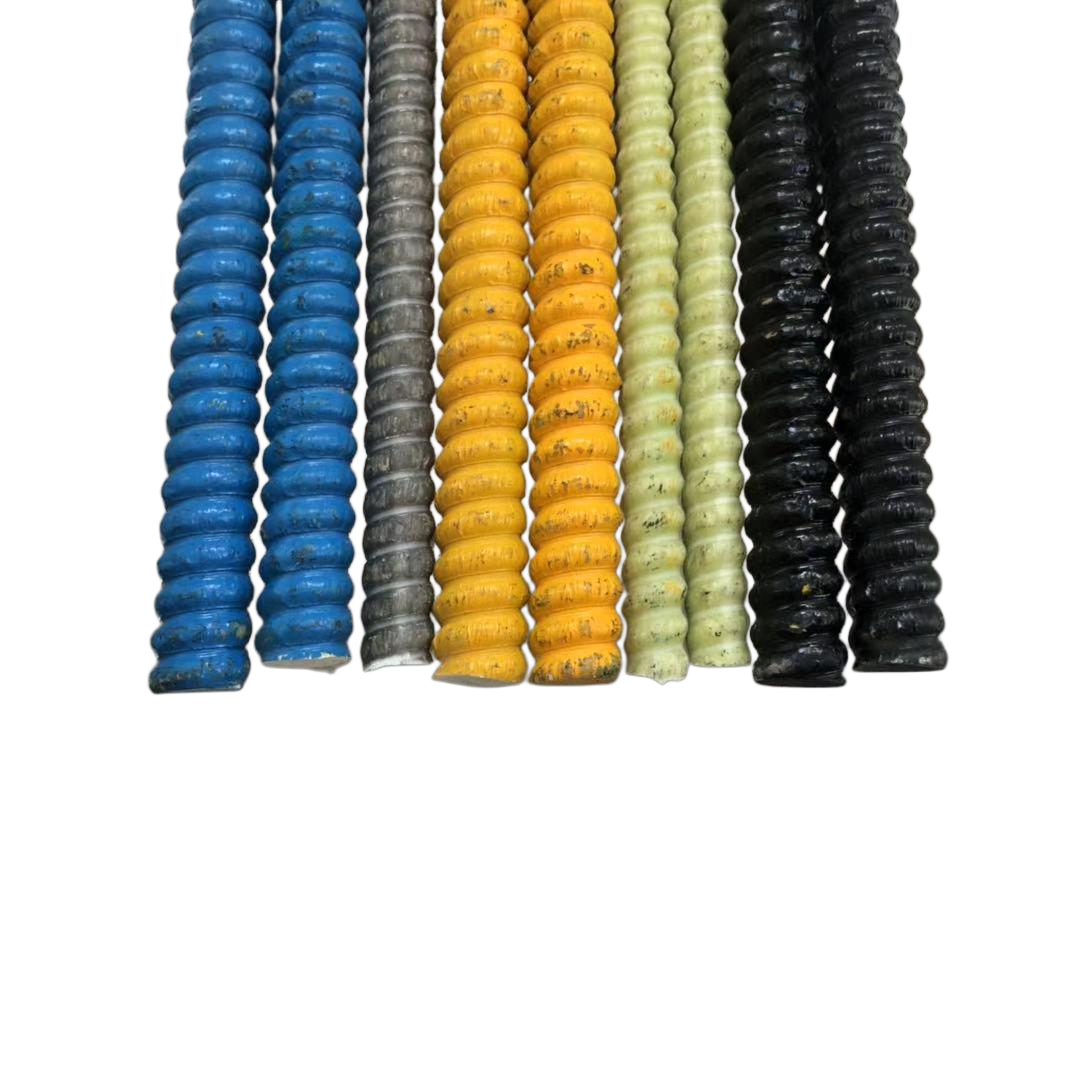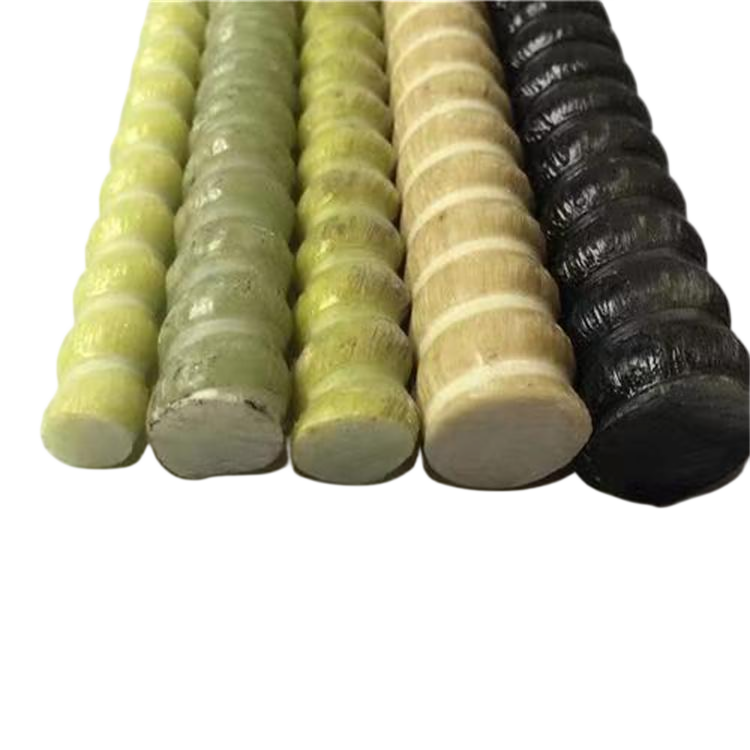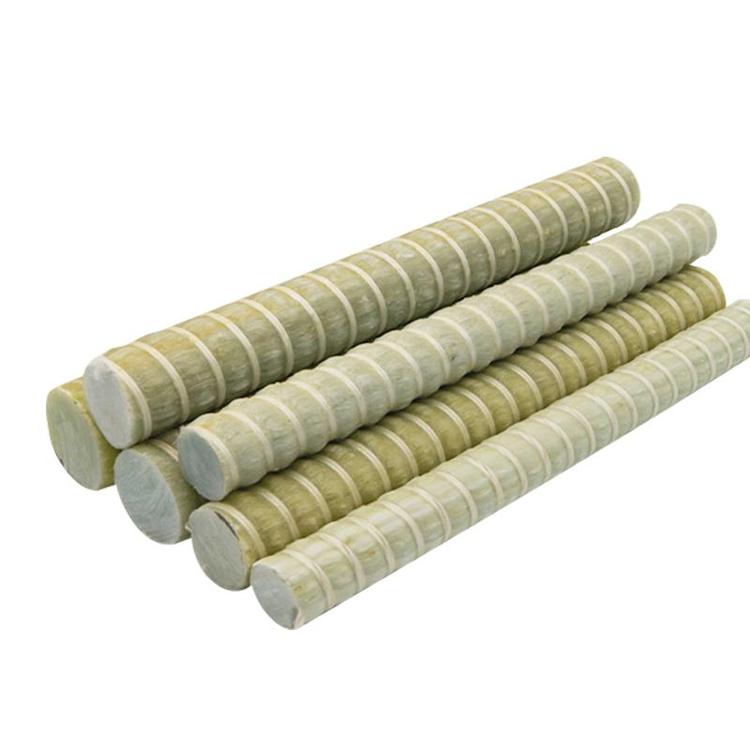The tensile strength of fiberglass reinforcement is much higher than that of steel reinforcement, but its elastic modulus is lower, which is due to the essential differences in its material composition, microstructure, and mechanical mechanism. Below is a detailed analysis from the perspective of scientific principles:
1、 The core mechanism of the difference in tensile strength
Fiberglass Reinforcement: Covalent Bonds and Fiber Reinforcement Mechanism
Material basis: Glass fiber reinforcement is made of glass fiber as the reinforcing phase (accounting for 60% -70% by volume), and its core component is a silica (SiO ₂) network structure, which forms a high-strength lattice through covalent bonds.
Strength source:
The fracture energy of glass fiber: The fracture energy of glass fiber is as high as 7.0-9.5 kJ/m ², far exceeding the fracture energy of metal bonds in steel bars (about 2.5-4.0 kJ/m ²).
Fiber arrangement optimization: Fibers are arranged in an orderly manner along the axial direction, and the load is efficiently transmitted to the fibers through the resin matrix, achieving concentrated stress bearing along the fiber direction.
Data comparison: The tensile strength of fiberglass reinforcement can reach 500-900 MPa, while that of ordinary steel reinforcement (HRB400) is 400-600 MPa, and high-strength steel reinforcement (HRB600) is only 600-750 MPa.
Reinforcement: Metal Bond and Dislocation Strengthening Mechanism
Material foundation: Steel bars are made of iron carbon alloy, which is formed into a ferrite pearlite structure through hot rolling or cold drawing processes. The non directional nature of metal bonds endows them with uniform three-dimensional load-bearing capacity.
Strength source:
Dislocation motion resistance: Carbon atom solid solution strengthening and pearlite lamellar structure hinder dislocation slip, but the fracture energy of metal bonds limits their theoretical strength upper limit.
Contribution of plastic deformation: The elongation at break of steel bars can reach 15% -25%. During the plastic deformation stage, energy is absorbed through dislocation propagation, but some theoretical strength is sacrificed.
2、 The core mechanism of the difference in elastic modulus
Fiberglass Reinforcement: Resin Matrix and Interface Effect
Matrix modulus limitation: The elastic modulus of resin matrix (such as epoxy resin) is only 3-5 GPa, much lower than the 200 GPa of steel reinforcement.
Weakness of interface bonding: The interface bonding strength between glass fiber and resin (usually<10 MPa) is much lower than the bonding strength between ferrite and pearlite in steel bars, and it is prone to interface debonding or matrix cracking under stress.
Brittle characteristics: The stress-strain curve of fiberglass reinforcement shows linear fracture, lacking a yield platform for steel bars, resulting in an apparent elastic modulus (40-60 GPa) that is only 1/3-2/5 of that of steel bars.
Reinforcement: Metal Bond and Crystal Slip Mechanism
High rigidity essence: The non directional nature of metal bonds enables the crystal slip system to be uniformly distributed in three-dimensional space, resulting in high resistance to dislocation motion and endowing steel bars with high elastic modulus (200 GPa).
Plastic deformation regulation: The plastic deformation stage of steel bars releases local stress concentration through dislocation rearrangement, maintaining the stability of elastic modulus.
3、 The engineering significance of performance differences
Characteristic glass fiber reinforced steel bars
Tensile strength 500-900 MPa (significant advantage) 400-750 MPa
Elastic modulus 40-60 GPa (1/3-2/5 steel bars) 200 GPa
Failure mode brittle fracture (no warning) necking ductile failure (warning)
Applicable scenarios: high requirements for corrosion resistance, lightweight, fatigue resistance, plastic deformation, and seismic resistance
4、 Conclusion
The high tensile strength of glass fiber reinforcement is due to the covalent bond structure and optimized fiber arrangement of glass fibers, while the low elastic modulus is limited by the modulus of the resin matrix, insufficient fiber matrix interface bonding strength, and material brittleness. This combination of characteristics gives it unique advantages in corrosion resistance, lightweight, and fatigue resistance scenarios, but it still relies on steel reinforcement in structures that require high rigidity or plastic deformation. In the future, through nano modified resin or fiber surface treatment technology, it is expected to further enhance the elastic modulus of glass fiber reinforcement and expand its application range.



























